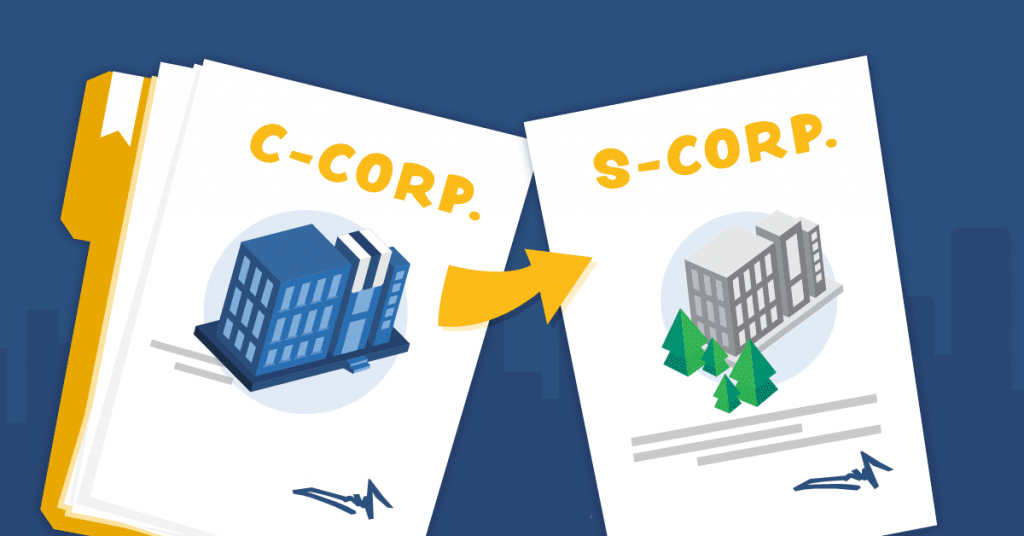Converting from a C-Corp to an S-Corp

Some businesses currently taxed as C-corps may benefit from electing for S-corp tax status. However, you should weigh the pros and cons before making the change. Here’s what you should know.
What is the difference between a C-corporation and an S-corporation?
C-corporations (C-corps) and S-corporations (S-corps) are not actual business entity types, but are simply tax classifications. The default tax classification for corporations is C-corp status, but a corporation may elect for S-corp status by filing with the IRS. An LLC may also elect for S-corp or C-corp tax status.
The main difference between a C-corp and an S-Corp is that a C-corp is subject to double taxation, which means that the corporation must file IRS Form 1120 each year and pay corporate income tax. In addition, the business owners are taxed at the personal level on any dividends they receive from the corporation. An S-Corp, on the other hand, is taxed as a “pass-through entity,” meaning that the business does not have to pay corporate taxes. Instead, the revenue “passes through” the business to the owners, who are only taxed on the income at the personal level.
S-corp status sounds better, right? However, it’s not that simple. First of all, not all corporations qualify for S-corp status. In order to qualify as an S-corp, a corporation must:
- Have no more than 100 shareholders, who must be US citizens/residents.
- Only have individuals as shareholders, as opposed to business entities (with a few exceptions).
- Only have one class of stock.
Additionally, not all S-corps will pay lower taxes than C-corps. The corporate tax rate was lowered to 21% in 2018, whereas the maximum personal tax rate is currently 37%. So you should consult a tax attorney to see if converting from a C-corp to an S-corp will actually save you money.
How do I change from a C-corp to an S-corp?
If you want to change your business’s tax status from C-corp to S-corp status, you will need to submit Form 2553 to the IRS, which must be signed by all shareholders. You must either file this form:
- No later than two months and fifteen days from the beginning of the tax year. (So if your tax starts on January 1st, you will have to file by March 15th.)
OR
- Any time during the prior tax year. (So for example, if you file during October 2022, your S-corp status would go into effect at the beginning of the new tax year in January 2023.)
Also, keep in mind that even though S-Corps do not pay corporate income tax, they must still report their income to the IRS annually by filing Form 1020S.
What are the tax consequences of converting from a C-corp to an S-corp?
Converting from a C-corp to an S-corp can have both positive and negative impacts on your taxes.
One potential negative impact to consider before converting a C-corp into an S-corp is the Built-In Gains (BIG) Tax. The BIG Tax is a special tax on S-corps that were previously C-corps, which taxes assets that the corporation sells within five years of electing for S-corp status. The BIG tax rate is currently 21%.
On the other hand, a benefit of electing for S-corp status is the 20% qualified business income deduction. This tax deduction lets S-corp shareholders deduct up to 20% of their qualified business income. Qualified business income is, basically, net profit, but it excludes certain income, including capital gains, interest, and dividends.
If you’re feeling overwhelmed by all this tax talk—we get it. Deciding on the best tax election for your business is complicated, which is why we recommend talking to a business attorney or CPA before making your final decision.
Learn more about Getting S-Corp Tax Election Status.



